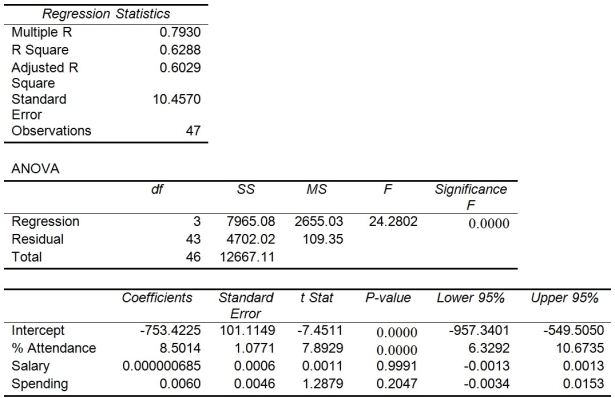TABLE 13-15
The superintendent of a school district wanted to predict the percentage of students passing a sixth-grade proficiency test. She obtained the data on percentage of students passing the proficiency test (% Passing), daily mean of the percentage of students attending class (% Attendance), mean teacher salary in dollars (Salaries), and instructional spending per pupil in dollars (Spending) of 47 schools in the state.
Following is the multiple regression output with Y = % Passing as the dependent variable,  = : % Attendance,
= : % Attendance,  = Salaries and
= Salaries and  = Spending:
= Spending:

-Referring to Table 13-15, the alternative hypothesis H₁: At least one of βⱼ ≠ 0 for j = 1, 2, 3 implies that percentage of students passing the proficiency test is related to at least one of the explanatory variables.
Definitions:
Power Differences
The disparities in authority, control, and influence among individuals or groups within organizations or societies.
Scarce Resources
Essential inputs used in the production of goods and services that are limited in availability, necessitating effective management and allocation.
Bargaining Skills
Abilities used to negotiate favorable terms during discussions, often involving compromise to reach a mutually acceptable agreement.
Accommodating
A conflict management style in which one cooperates with the other party while not asserting one’s own interests.
Q12: Which is believed to be one of
Q15: Referring to Table 12-11, which of the
Q20: Oftentimes,companies use this method to trim their
Q34: Which of the following is NOT one
Q59: If we use the chi-square method of
Q80: Referring to Table 11-6, what is the
Q135: Referring to Table 12-10, the null hypothesis
Q144: Referring to Table 13-5, what fraction of
Q171: Referring to Table 12-2, what is the
Q234: Referring to Table 13-10, to test the